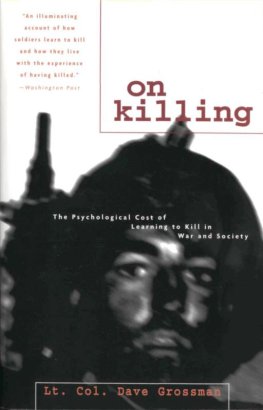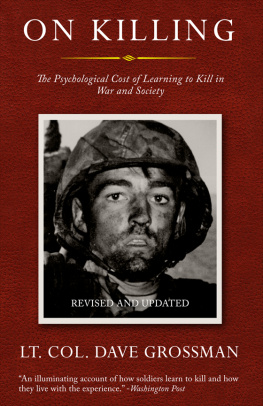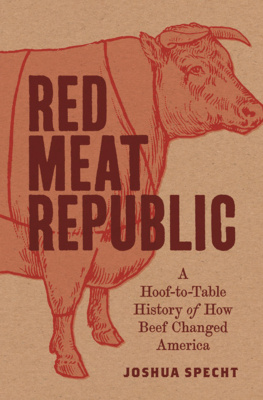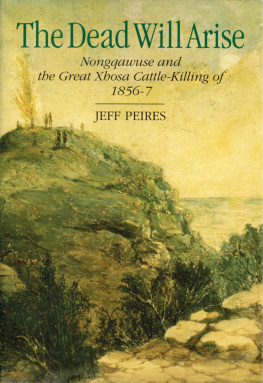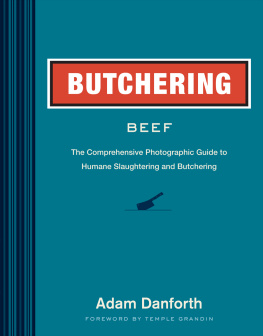Yale Agrarian Studies Series
James C. Scott, Series Editor
The Agrarian Studies Series at Yale University Press seeks to publish outstanding and original interdisciplinary work on agriculture and rural societyfor any period, in any location. Works of daring that question existing paradigms and fill abstract categories with the lived-experience of rural people are especially encouraged.
JAMES C. SCOTT, Series Editor
James C. Scott, Seeing Like a State: How Certain Schemes to Improve the Human Condition Have Failed
Michael Goldman, Imperial Nature: The World Bank and Struggles for Social Justice in the Age of Globalization
Steve Striffler, Chicken: The Dangerous Transformation of Americas Favorite Food
Parker Shipton, The Nature of Entrustment: Intimacy, Exchange, and the Sacred in Africa
Alissa Hamilton, Squeezed: What You Dont Know About Orange Juice
Parker Shipton, Mortgaging the Ancestors: Ideologies of Attachment in Africa
Bill Winders, The Politics of Food Supply: U.S. Agricultural Policy in the World Economy
James C. Scott, The Art of Not Being Governed: An Anarchist History of Upland Southeast Asia
Stephen K. Wegren, Land Reform in Russia: Institutional Design and Behavioral Responses
Benjamin R. Cohen, Notes from the Ground: Science, Soil, and Society in the American Countryside
Parker Shipton, Credit Between Cultures: Farmers, Financiers, and Misunderstanding in Africa
Paul Sillitoe, From Land to Mouth: The Agricultural Economy of the Wola of the New Guinea Highlands
Sara M. Gregg, Managing the Mountains: Land Use Planning, the New Deal, and the Creation of a Federal Landscape in Appalachia
Michael R. Dove, The Banana Tree at the Gate: A History of Marginal Peoples and Global Markets in Borneo
Patrick Barron, Rachael Diprose, and Michael Woolcock, Contesting Development: Participatory Projects and Local Conflict Dynamics in Indonesia
Edwin C. Hagenstein, Sara M. Gregg, and Brian Donahue, eds., American Georgics: Writings on Farming, Culture, and the Land
Timothy Pachirat, Every Twelve Seconds: Industrialized Slaughter and the Politics of Sight
For a complete list of titles in the Yale Agrarian Studies Series, visit www.yalebooks.com.
Every Twelve
Seconds
Industrialized Slaughter
and the Politics of Sight
TIMOTHY PACHIRAT
Yale
UNIVERSITY PRESS
New Haven and London
Published with assistance from the foundation established in memory of Amasa Stone Mather of the Class of 1907, Yale College.
Copyright 2011 by Timothy Pachirat.
All rights reserved.
This book may not be reproduced, in whole or in part, including illustrations, in any form (beyond that copying permitted by Sections 107 and 108 of the U.S. Copyright Law and except by reviewers for the public press), without written permission from the publishers.
Yale University Press books may be purchased in quantity for educational, business, or promotional use. For information, please e-mail sales.press@yale.edu (U.S. office) or sales@yaleup.co.uk (U.K. office).
Set in Minion type by Integrated Publishing Solutions, Inc.
Printed in the United States of America.
Library of Congress Cataloging-in-Publication Data
Pachirat, Timothy, 1976
Every twelve seconds : industrialized slaughter and the politics
of sight / Timothy Pachirat.
p. cm. (Yale agrarian studies series)
Includes bibliographical references and index.
ISBN 978-0-300-15267-8 (alk. paper)
1. Slaughtering and slaughter-housesSocial aspectsUnited
States. 2. Meat industry and tradeSocial aspectsUnited
States. 3. Animal welfareUnited States. 4. Pachirat, Timothy, 1976- I. Title.
TS1963.P33 2011
664.9029dc23
2011017018
A catalogue record for this book is available from the British Library.
This paper meets the requirements of ANSI/NISO Z39.48-1992
(Permanence of Paper).
10 9 8 7 6 5 4 3 2 1
For Parker and Mia Jay-Pachirat,
and in memory of Jane Karen Pharnes Pachirat
All right, but how do you get people to do the dirty work? Oiie asked.
What dirty work? asked Oiies wife, not following.
Garbage collecting, grave digging, Oiie said.
Shevek added, Mercury mining, and nearly said, Shit processing, but recollected the Ioti taboo on scatological words. He had reflected, quite early in his stay on Urras, that the Urrasti lived among mountains of excrement, but never mentioned shit.
URSULA LE GUIN, The Dispossessed
The problem with you is, you see too much and smell too much... , said Avinash. Thats the secretto distract your senses. Have I told you my theory about them? I think that our sight, smell, taste, touch, hearing are all calibrated for the enjoyment of a perfect world. But since the world is imperfect, we must put blinders on the senses.
ROHINTON MISTRY, A Fine Balance
SLIFT(leaving): I advise you not to take up with those people down in the yards, theyre a vile lot, frankly the scum of the earth.
JOAN: I want to see it.
BERTOLT BRECHT, Saint Joan of the Stockyards
Contents
Acknowledgments
Risking the maudlin, I want to begin by acknowledging the animals that died in the making of this book. Thirty-three million cattle are killed and sold as meat each year in the United States, and I aided in taking at least 240,000 of these creatures lives in the nearly half a year I spent researching the work of killing. These cattle are part of the more than 8.5 billion animals that are slaughtered annually in the United States without respect or recognition, demonstrating the horrific efficiency of an industrialized food-production system that reduces sentient beings to raw material as well as the power of distance and concealment to make the unacceptable acceptable and the extraordinary ordinary. Although this book does not engage directly with arguments for animal rights, it is my deep hope that its detailed account of industrialized killing will invite readers to seek a more thoughtful relationship with the nonhuman creatures with whom we share the planet and a more critical stance toward the mechanisms of distance and concealment that currently operate to make those relationships palatable to the conscience as well as the stomach.
The violence of industrialized killing also cuts against humans, and I owe a great debt to my many co-workers on the kill floor. Without their patience, humor, and example, it is unlikely that I would have lasted more than a few days in the slaughterhouse. I am especially grateful to the workers of the cooler: Andrs, Carlos, Christian, Javier, Manuel, Ray, Tyler, Umberto, and, especially, Ramn, who drove me to work on many an early morning and kept me sane during interminable hours in the cooler. I am also grateful to my yellow-hat supervisor, Javier, and my red-hat supervisor, James: more than once, their seemingly trivial acts of kindness proved essential to my survival. I strive to tell the story of killing work in a way recognizable to everyone on the kill floor, including the kill floor managers and the U.S. Department of Agriculture inspectors. It is my hope that they too will find their experiences of killing work reflected in these pages.
The research for this book was possible only because Julie Jay and our daughters, Parker and Mia, agreed to live in Nebraska with me from 2004 to 2006. They tolerated my stench and my mustache (such as it was) while I worked on the kill floor and, I am happy to report, created thriving lives for themselves that had nothing to do with the killing of cattle. I am deeply thankful for the many moments away from the slaughterhouse that we spent together and for their ongoing encouragement and support throughout the writing of this book. I am also grateful to Sergio Sosa, Omaha Together One Community, our friends at COR, and the librarians at the University of Nebraska-Omaha, the University of Nebraska-Lincoln, and the Omaha Public Library for making our time in Omaha a rich one.
Next page


